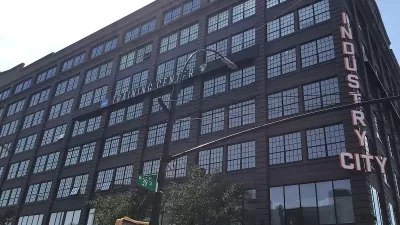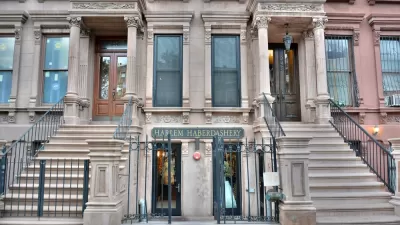A arcane provision in the New York City Charter that increases the threshold for a zoning change approval to a three-fourths vote of the city council may help opponents defeat a proposed rezoning of 125th Street in Harlem.
"The City Charter, the document that lays out the rules of city government, has traditionally been the domain of municipal lawyers and few others. Its pages are a tangle of esoteric language and run-on sentences.
But in a decision born of desperation and perhaps a touch of naïveté, a former male model, a human rights lawyer and two law school students plunged headlong into the document on a recent Friday evening as part of an effort to oppose the proposed rezoning of 125th Street in Harlem.
The rezoning, approved by the Planning Commission in March, is intended to remake 125th Street into a regional business hub with office towers and more than 2,000 new units of market-rate condominiums. Opponents say the plan would displace dozens of small businesses, does not offer enough moderate-income housing and does too little to protect the area's historic buildings.
What the group meeting on that Friday came away with was a 110-year-old surprise that more than a few activists have dreamed about over the years: using a clause buried in a city document to try to derail a major project.
To wit, Page 74, Section 200, Subsection 3 of the City Charter says, in so many words, that if signatures opposing a rezoning are obtained from the owners of 20 percent of the property, as determined by square footage, in one of three different areas - the area to be rezoned, the area adjacent to the property being rezoned, or the area "opposite" the property (for example, across the street) - then the City Council must approve the rezoning by a three-fourths vote, instead of by a simple majority.
And the four who found the subsection, members of a group called Voices of the Everyday People, are hopeful that they can prevent the Council from reaching that three-quarters majority on the rezoning."
FULL STORY: Fighting a New 125th St., Using a 110-Year-Old Law

Alabama: Trump Terminates Settlements for Black Communities Harmed By Raw Sewage
Trump deemed the landmark civil rights agreement “illegal DEI and environmental justice policy.”

Planetizen Federal Action Tracker
A weekly monitor of how Trump’s orders and actions are impacting planners and planning in America.

The 120 Year Old Tiny Home Villages That Sheltered San Francisco’s Earthquake Refugees
More than a century ago, San Francisco mobilized to house thousands of residents displaced by the 1906 earthquake. Could their strategy offer a model for the present?

In Both Crashes and Crime, Public Transportation is Far Safer than Driving
Contrary to popular assumptions, public transportation has far lower crash and crime rates than automobile travel. For safer communities, improve and encourage transit travel.

Report: Zoning Reforms Should Complement Nashville’s Ambitious Transit Plan
Without reform, restrictive zoning codes will limit the impact of the city’s planned transit expansion and could exclude some of the residents who depend on transit the most.

Judge Orders Release of Frozen IRA, IIJA Funding
The decision is a victory for environmental groups who charged that freezing funds for critical infrastructure and disaster response programs caused “real and irreparable harm” to communities.
Urban Design for Planners 1: Software Tools
This six-course series explores essential urban design concepts using open source software and equips planners with the tools they need to participate fully in the urban design process.
Planning for Universal Design
Learn the tools for implementing Universal Design in planning regulations.
Clanton & Associates, Inc.
Jessamine County Fiscal Court
Institute for Housing and Urban Development Studies (IHS)
City of Grandview
Harvard GSD Executive Education
Toledo-Lucas County Plan Commissions
Salt Lake City
NYU Wagner Graduate School of Public Service





























